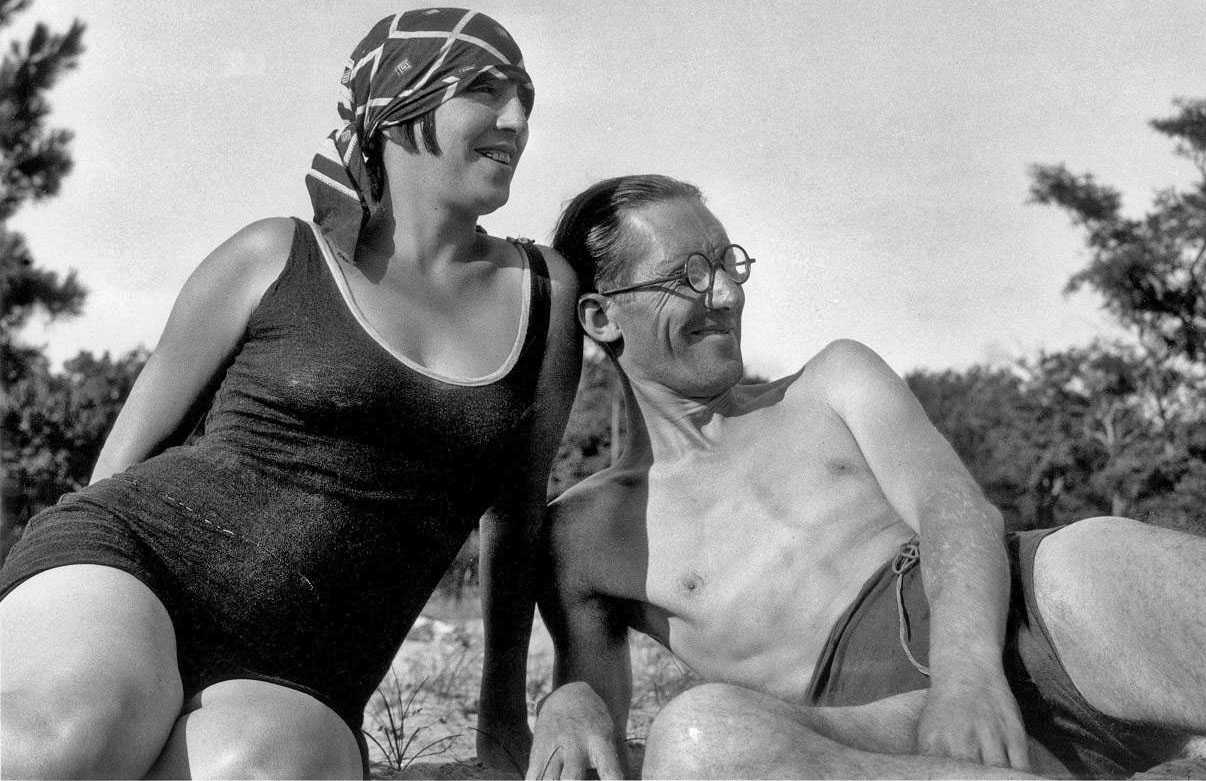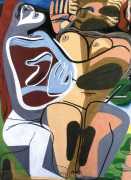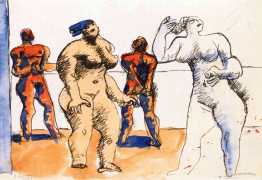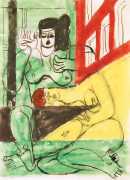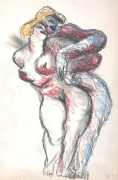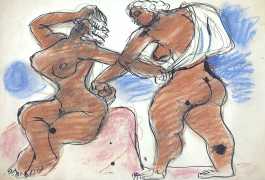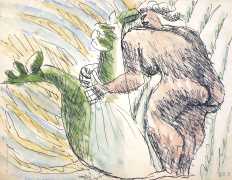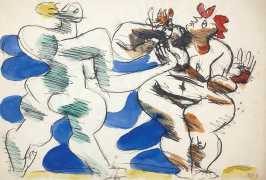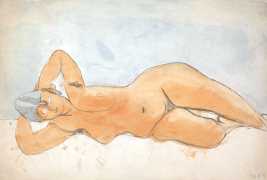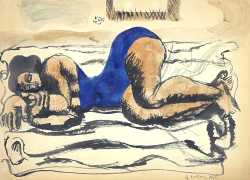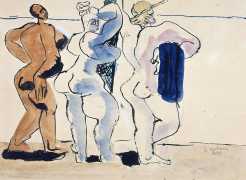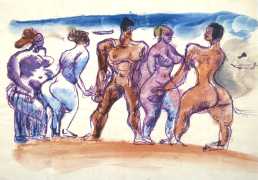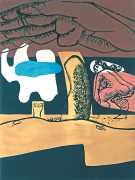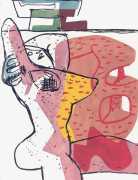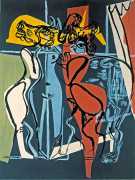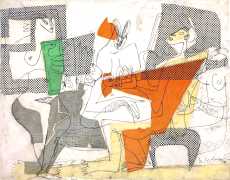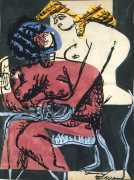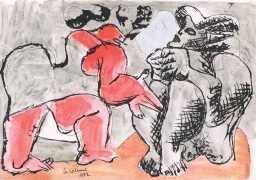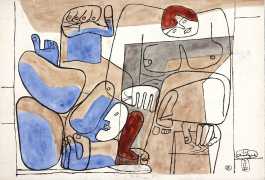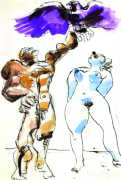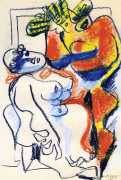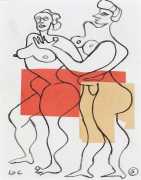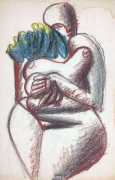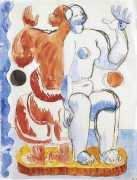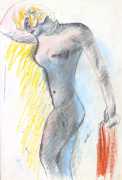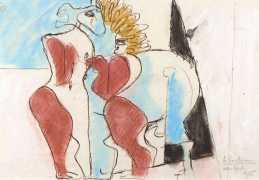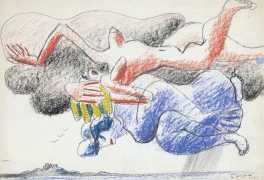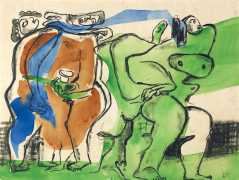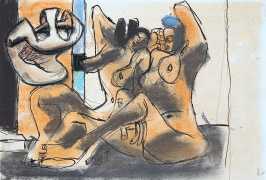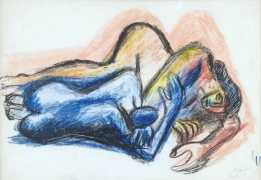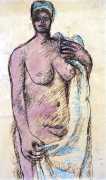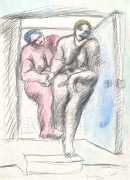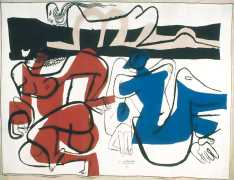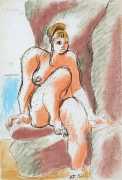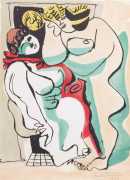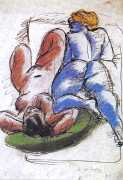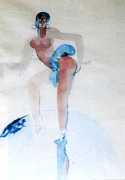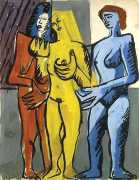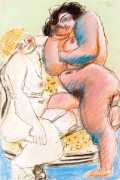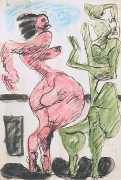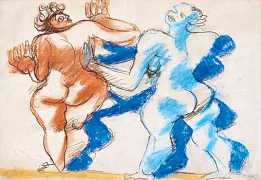While Le Corbusier might be best remembered as a revolutionary architect and urban planner, he was also a prolific artist. In his lifetime he created some 7,000 works on paper and 450 oil paintings. His visual arts output was both highly original and prolific, stretching from 1917 to 1965. As well the painter Amédée Ozenfant, whose home and studio he designed in the 1930s, Le Corbusier was also on good terms with many other artists of the period, including Pablo Picasso.
As an artist Le Corbusier liked to work primarily with clear lines, drawing numerous preliminary sketches and adding shading and colour afterwards. One of the main themes running through his work from 1928 onwards is the depiction of women. His drawings of women, over two thirds of which are erotic, dominate a large part of his drawings and paintings, and his portrayal of their curved and carefree forms is in sharp contrast to the serious nature of his architecture, predominated by lines and angles.
Although Le Corbusier was no feminist, he enjoyed working with women and was able to appreciate their skill and imagination. His atelier became a place where several important women designers chose to work, including Charlotte Perriand and Stanislavia Nowicki before World War II and Edith Schreiber, Blanche Limco and Maria Fenyo immediately afterward.
As far as his personal relationships with women were concerned, in 1930 he married Yvonne Gallis, a former fashion model from Monaco, but he also had several lovers outside their marriage, including a long-term affair with Swedish-American heiress Marguerite Tjader Harris.
